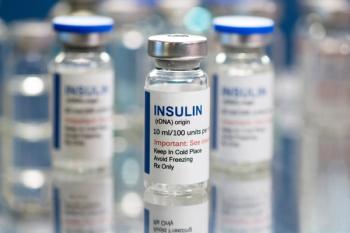
Study Confirms Benefits of Damoctocog Alfa Pegol in Severe Hemophilia A
A single infusion of damoctocog alfa pegol resulted in 25% higher area under the curve and 20% lower clearance in patients with severe hemophilia A.
A recent study found that 16 of 17 analyzed patients with severe hemophilia A demonstrated positive changes in favor of damoctocog alfa pegol compared with efmoroctocog alfa, according to research presented at the American Society of Hematology 62nd Annual Meeting and Exposition.
Damoctocog alfa pegol is a B-domain-deleted recombinant factor VIII (FVIII) indicated for the treatment and prophylaxis of bleeding in patients aged 12 years and older with hemophilia A. An earlier head-to-head crossover study found that damoctocog alfa pegol has an improved pharmacokinetic profile compared with efmoroctocog alfa, an extended-half-life, recombinant FVIII fusion protein.
According to the earlier study results, a single infusion of damoctocog alfa pegol resulted in 25% higher area under the curve (AUC) and 20% lower clearance compared with efmoroctocog alfa. However, the authors noted that the actual dose of efmoroctocog was later found to be higher than for damoctocog alfa pegol, necessitating a more accurate assessment of the differences.
The new single-center, randomized, open-label, crossover study aimed to meet this need. Eligible patients were male, aged 18 to 65 years, with severe hemophilia A. After a wash-out period of 3 or more days for standard-half-life and 5 or more days for extended-half-life FVIII products, participants were randomized 1:1 to receive a single 60 IU/kg dose of either damoctocog alfa pegol or efmoroctocog alfa. Patients then received a single dose of the other product after a wash-out period of 7 or more days.
According to the presenters, 1 patient with pre-existing anti-polyethylene glycol antibodies was considered an outlier for the pharmacokinetic analysis and was excluded from that analysis. In total, 17 patients with a median age of 34 years were included in the analysis. For both drugs, vials with a nominal potency of 1000 UI/vial were used, while actual potencies of efmoroctocog alfa and damoctocog alfa pegol used in the study were 1093 IU/vial and 990 IU/vial, respectively.
After adjusting for potency, the investigators found that the AUC and clearance measurements were in favor of damoctocog alfa pegol. The AUC was significantly increased by 39% for damoctocog alfa pegol compared with efmoroctocog alfa, and an increase with damoctocog alfa pegol was observed in 16 of the 17 patients. Furthermore, the geometric mean clearance was significantly reduced with damoctocog alfa pegol, with 16 patients exhibiting a difference in its favor.
Based on these findings, the authors concluded that the improvements in the precedent analysis were confirmed. Compared with the unadjusted analysis, the investigators said a great improvement for AUC was observed for damoctocog alfa pegol compared with efmoroctocog alfa, further supporting the superior pharmacokinetic profile of damoctocog alfa pegol.
REFERENCE
Potency-Adjusted Analyses of a Head-to-Head Pharmacokinetic Study of Damoctocog Alfa Pegol (BAY 94-9027) and Efmoroctocog Alfa (rFVIIIFc) in Patients with Severe Hemophilia A. Presented at ASH Virtual Conference; December 5, 2020.
Newsletter
Stay informed on drug updates, treatment guidelines, and pharmacy practice trends—subscribe to Pharmacy Times for weekly clinical insights.










































































































































































































